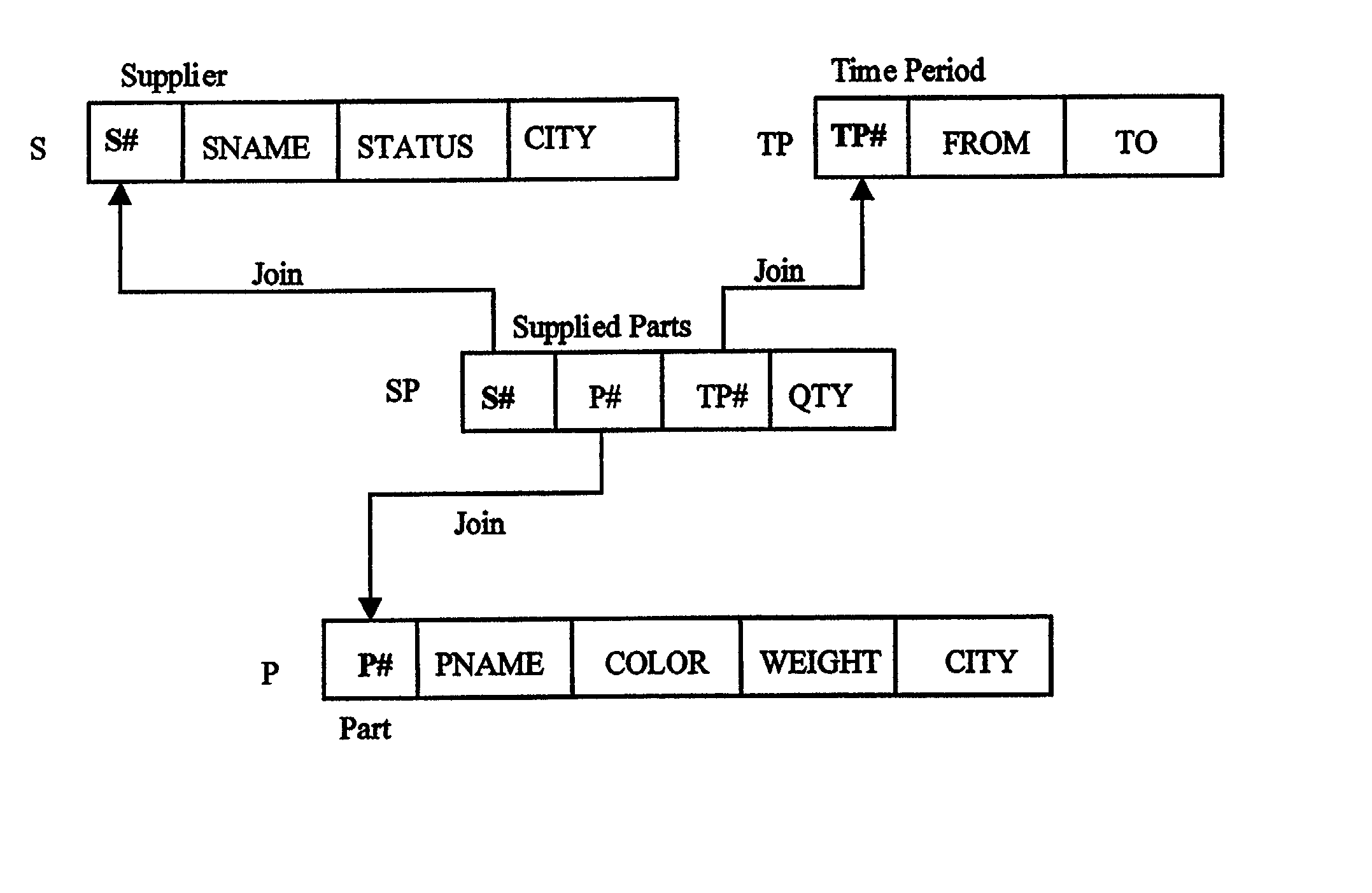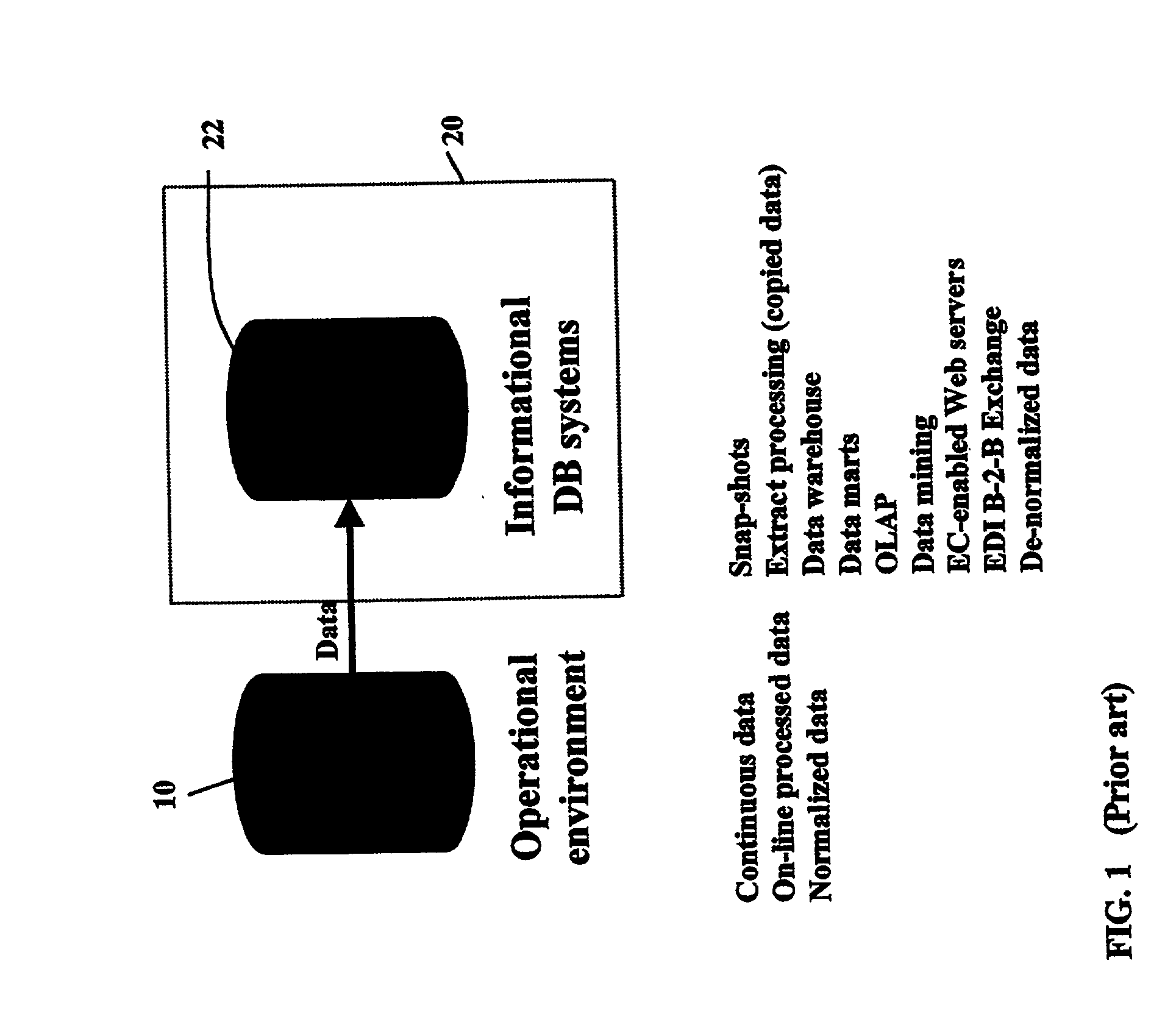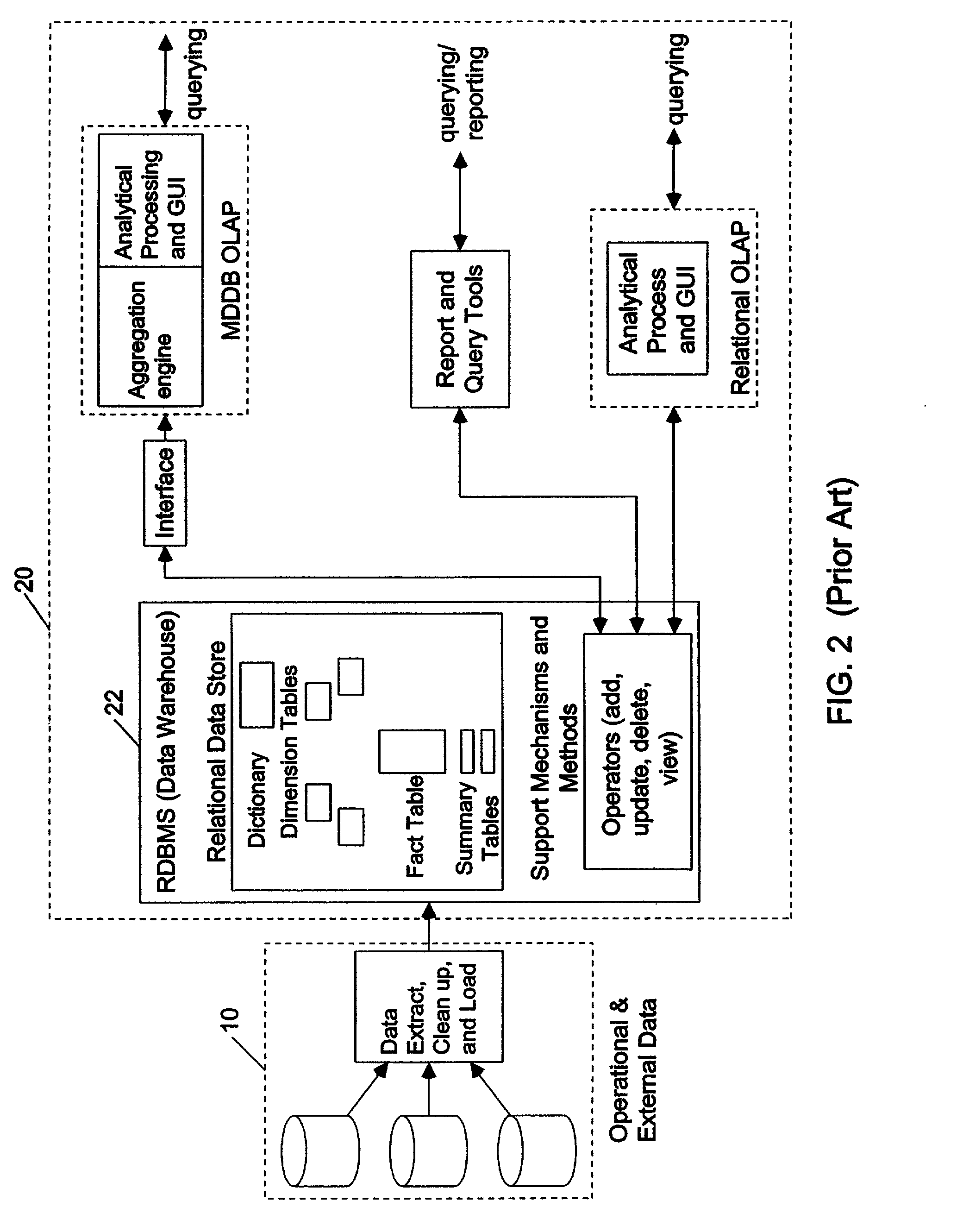Relational database management system having integrated non-relational multi-dimensional data store of aggregated data elements
a database management system and database technology, applied in multi-dimensional databases, instruments, manufacturing tools, etc., can solve the problems of inability to provide organizations with data warehouse, inability to meet the needs of users, and inability to meet the requirements of users, etc., to maximize the query performance of large data volumes, increase system performance, and user flexibility and ease of us
- Summary
- Abstract
- Description
- Claims
- Application Information
AI Technical Summary
Benefits of technology
Problems solved by technology
Method used
Image
Examples
Embodiment Construction
[0079] Referring now to FIG. 6 through FIG. 13, the preferred embodiments of the method and system of the present invention will be now described in great detail herein below.
[0080] Through this document, the term "aggregation" and "pre-aggregation" shall be understood to mean the process of summation of numbers, as well as other mathematical operations, such as multiplication, subtraction, division etc. It shall be understood that pre-aggregation operations occur asynchronously with respect to the traditional query processing operations. Moreover, the term "atomic data" shall be understood to refer to the lowest level of data granularity required for effective decision making. In the case of a retail merchandising manager, atomic data may refer to information by store, by day, and by item. For a banker, atomic data may be information by account, by transaction, and by branch.
[0081] In general, the improved RDBMS system of the present invention excels in performing two distinct func...
PUM
| Property | Measurement | Unit |
|---|---|---|
| dimensions | aaaaa | aaaaa |
| data structures | aaaaa | aaaaa |
| dimension | aaaaa | aaaaa |
Abstract
Description
Claims
Application Information
 Login to View More
Login to View More - R&D
- Intellectual Property
- Life Sciences
- Materials
- Tech Scout
- Unparalleled Data Quality
- Higher Quality Content
- 60% Fewer Hallucinations
Browse by: Latest US Patents, China's latest patents, Technical Efficacy Thesaurus, Application Domain, Technology Topic, Popular Technical Reports.
© 2025 PatSnap. All rights reserved.Legal|Privacy policy|Modern Slavery Act Transparency Statement|Sitemap|About US| Contact US: help@patsnap.com



